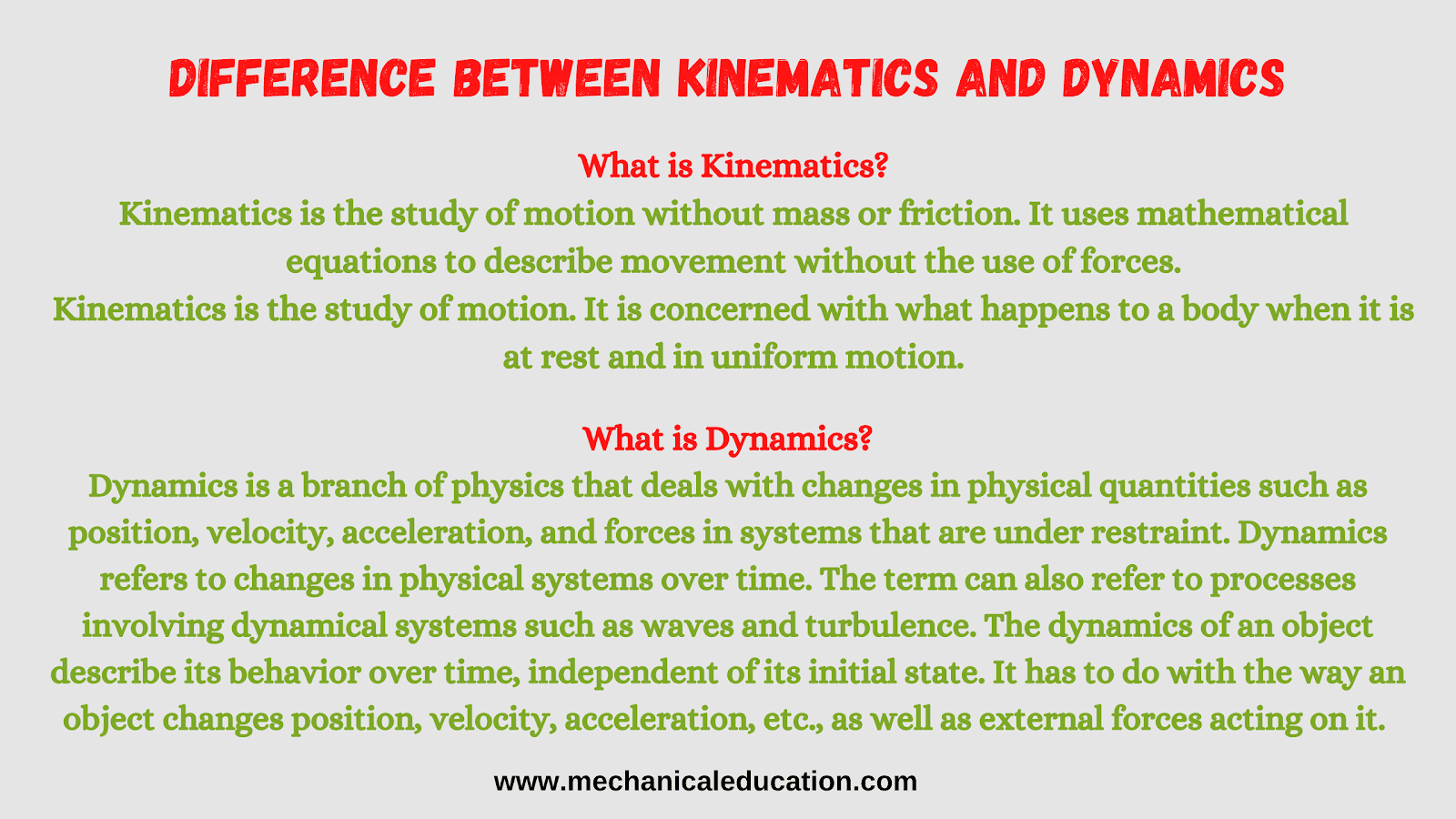Difference between Kinematics and Dynamics
What is Kinematics?
Kinematics is the study of motion without mass or friction. It uses mathematical equations to describe movement without the use of forces.
What is Dynamics?
Dynamics is a branch of physics that deals with changes in physical quantities such as position, velocity, acceleration, and forces in systems that are under restraint. Dynamics refers to changes in physical systems over time. The term can also refer to processes involving dynamical systems such as waves and turbulence. The dynamics of an object describe its behavior over time, independent of its initial state. It has to do with the way an object changes position, velocity, acceleration, etc., as well as external forces acting on it.
Difference between kinematics and dynamics?
Kinematics is all about what happens to an object when it moves while dynamics is about how things change over time concerning other objects that are moving around.
Kinematics is the study of how things move, while dynamics is the study of forces and motion.
Kinematics is the study of motion. It is concerned with what happens to a body when it is at rest and in uniform motion.
Dynamics is the study of forces and their effect on moving bodies. It includes kinematics as well as other physical laws such as Newton’s Laws of Motion, which determine how an object will move through space or interact with another object.
Kinematic analysis is a description of motion without considering the forces involved. Dynamic analysis includes all forces that act on an object.
kinematic equation relates the position of a body to its velocity, while a dynamic equation relates acceleration and force. The dynamic equations are important in mechanics. The reason why they are important is that they help to determine the kinetic energy of an object as well as how much work it can do when subjected to forces.
Kinematics refers to motion through space or displacement through time. It deals with how objects move and how their movement changes over time. Kinematics can be used for calculating things like speed, distance traveled, acceleration, and other properties of motion. In physics, kinematics refers to motion through space or displacement through time.
Dynamics refers to change in motion over time it’s what we use when we’re talking about velocity (a function of both mass and speed), acceleration (a function of both force and speed), angular momentum (angular momentum = moment of inertia x mass), linear momentum (linear momentum = mass x velocity), etc… It also determines whether an object will stay at rest or continue moving in a straight line once an initial force has been applied, this is called translational invariance.
Kinematics deals with the relationship between an object’s position and its velocity or speed.
Dynamics refers to all physical phenomena that involve a change in momentum, such as movement, acceleration, etc.
The Fundamental theorem of kinematics states that if a body moves along a straight line with constant speed, then its acceleration is zero.
The Fundamental theorem of dynamics is for any system in equilibrium, the net force acting on it must be zero.


